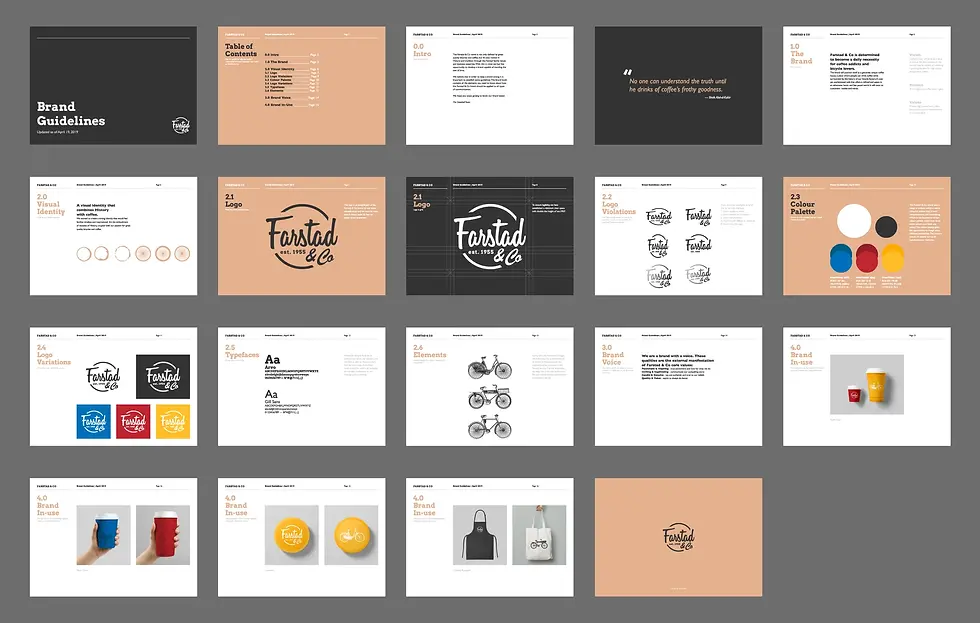Branding is an essential part of any successful business. It defines the image and perception customers have of your company and sets you apart from competitors. Unfortunately, creating powerful branding can be a challenging task for small businesses due to limited resources.
That’s why we’ve created this comprehensive guide on creating a strong brand for your small business in Orlando. We will walk you through each step of the branding process: defining your target audience, creating a unique value proposition, developing visual elements such as logos and color schemes, utilizing social media as well as traditional marketing methods, crafting effective messaging across all platforms, monitoring success metrics over time—and more!

By following this step-by-step guide, you can build a powerful brand presence that will make your business stand out in Orlando.
Step 1: Define Your Target Audience
When creating successful branding for your business, it is essential to define your target market. By clearly identifying the characteristics of your ideal customer and understanding who you're trying to reach, you can develop an effective marketing strategy that resonates with the right audience.
Having a clear definition of your target market will enable you to focus on tailoring messaging and design elements that are most likely to appeal to the specific users that are part of the audience.
For example, if you’re launching a new fitness product, then your target audience might include health-conscious individuals looking for the latest and greatest way to stay fit.
Alternatively, if you’re launching a new video game service, then younger gamers may make up a large portion of your target audience.
No matter who your target audience is, it is important to research their interests, knowledge level, and other attributes in order to craft a strategy that resonates with them.
Step 2: Create A Unique Value Proposition
Once you have identified who your target audience is, it is time to craft a unique value proposition that resonates with them. This statement should communicate why customers should buy from you instead of competitors — what makes your product or service special?
Your value proposition needs to be based on meaningful benefits that will incentivize customers to choose your brand over others.
Step 3: Develop Visual Elements
Next up comes developing visual elements such as logos and color schemes that will stand out in consumers’ minds when they think about your business. Keep in mind that visuals should not just be aesthetically pleasing but also symbolic — they need to represent the values behind your brand and accurately reflect its identity.
The design language used here should be consistent across all platforms so that it becomes recognizable even when displayed without text or numbers associated with it. It is important to note that researching competitors’ visual elements may prove useful during this stage as well.
Logos
Logo design is an essential part of crafting a recognizable brand. As you design your brand's logo, it is important to consider the emotions and feelings that should be evoked by its shape and colors.
It should also be memorable and recognizable in a style that best suits the mission, values, and goals behind the business. While designing a logo for a brand, thoughtful considerations need to be taken such as colors, designs, and fonts.
For example, if the logo is expected to represent grandeur, then you may want to include colors such as gold or red hues along with ornate fonts. On other hand, if you are aiming to create a modernizing feel then neutral colors and a simple design might be more suited.
For example, when most people see Nike's iconic swoosh, they immediately think of "sportswear".

Regardless of the approach used in designing logos, one thing should remain true: it should capture the vision behind your business while making a lasting impression on your target audience.
Fonts
It is important to put thought into how you want customers to perceive your brand while selecting fonts that stand out but maintain a level of professionalism.
For example, rounded fonts can represent fun and lightheartedness, while sharper edges give off a more professional and bold vibe. The consistent use of the same font is also key for creating brand recognition.
Leveraging the right font for your logo and website will leave lasting impressions on anyone who interacts with your organization.

Colors
A brand’s choice of colors plays an important role because certain colors are associated with different feelings and emotions that may influence how a customer perceives and interacts with your brand. For example, Coca-Cola‘s iconic red hue embodies its message of energy and joy while Starbuck's green color represents both quality coffee beans and commitment to the environment.

Similarly, Adobe chose six primary brand colors — including yellow signifying innovation, light blue for trustworthiness, grey for professionalism, dark blue for inspiration, and orange for creativity — that reflect values key to their online products.
Color selection does not have to only be about practicality but also about emotion – carefully selecting the right shades can tell customers a lot about what you stand for before they ever visit your website or make a purchase.
Product Packaging
When it comes to branding, packaging can be just as important as the product itself. To stand out in a crowded market, it is important to ensure your packaging selection helps define your brand and represents what you're selling in an aesthetically pleasing way.
Take Fashion Nova, for example, their bright colors, trendy style, and eye-catching patterns instantly draw in customers. Apple also has always had a consistent white or silver design across its products that embodies elegance and modernization in addition to innovative technology.

When selecting packaging it is key that you stay true to your brand's message while appealing to the people who are buying your product. Colors, shapes, words, textures, and even images can help show what makes your brand unique. Investing in something memorable that catches attention is essential for success!
Brand Stationery
Selecting the right stationery for your brand is a crucial part of establishing a unified and professional image. The stationery you choose should be easy to read and recognize, making it simple for customers to recall what sets your brand apart.
Some big brands that have done an excellent job in terms of their stationery selection include Apple, which opts for clean and minimalistic design elements in their packaging, leaflets, business cards, and other print materials.
McDonald's, which successfully uses its iconic golden arches logo as a unifying factor on all their stationery designs; and Nike, whose design elements are sharp and modern while still being very recognizable due to their use of bold colors such as red and black.
With careful consideration of how your brand is represented across all forms of stationery, you will be able to create a meaningful experience with your target audience.

Step 4: Creating Branding Guidelines To Ensure Consistency Across Platforms
To ensure branding is consistent across all platforms, it is necessary to create a comprehensive set of guidelines. This document should include the logo, colors, fonts, and other visual elements used in your brand’s messaging. It should also contain details such as tone of voice and any specific language to be used when talking about the company or products.

These guidelines should be used consistently, both internally and externally, so that all content released follows the same standards. That way, customers can easily recognize your brand regardless of where they see it or who is delivering the message.
Step 5: Create A Website That Reflects Your Brand And Make A Long-lasting Impression
A well-designed website is a key component of any branding strategy. One of the first things that your website should do is to provide users with an easy-to-navigate platform where they can quickly find information on your services or products.
Examples of successful website selection and user experience are seen across a variety of big brands such as Apple, Amazon, Airbnb, and Netflix. These websites emphasize user experience, simple navigation, and unique visuals to help their customers make informed decisions.
Additionally, having relevant content, updating your website frequently, and ensuring it works on multiple devices are essential qualities to consider when creating your brand’s website.
Step 6: Utilize Social Media And Traditional Marketing Methods To Connect With Customers
Now it’s time to start spreading awareness about your brand! The goal here is to engage with potential customers through the strategic use of both social media platforms (such as Instagram, Facebook, and Twitter) and traditional marketing methods (such as radio ads or newspaper articles).
You May Like: Small Business Marketing Checklist
When crafting content for each channel remember that the message needs to remain consistent throughout all platforms so there is no confusion regarding who you are and what makes you different from other companies offering similar products/services.
Additionally, do not forget to optimize posts with relevant keywords so they show up on search engines such as Google as well!
Step 7: Craft Effective Messaging Across All Platforms
Once people are aware of who you are they need to know exactly why they should care — this is where effective messaging comes into play! Your messaging needs to be persuasive yet succinct; long-winded descriptions won’t do much good here since people tend not to read more than a few sentences at most before deciding whether or not something catches their attention enough for further engagement (this could mean clicking on links provided within posts or buying products/services).
Additionally, try using storytelling techniques instead of simply listing facts about yourself; stories tend to be more engaging which increases chances of success!
Conclusion
Overall, effective branding is a process that requires dedication and creativity to ensure that your message stands out from the competition. Use these steps as a guide while creating and maintaining your brand’s identity both online and offline so it resonates with potential customers and inspires loyalty.
If you're ready to take your brand to the next level, we're here to help. Our team of branding experts will work with you to create a unique and impactful brand that resonates with your target audience. Contact us today to get started.
Comments